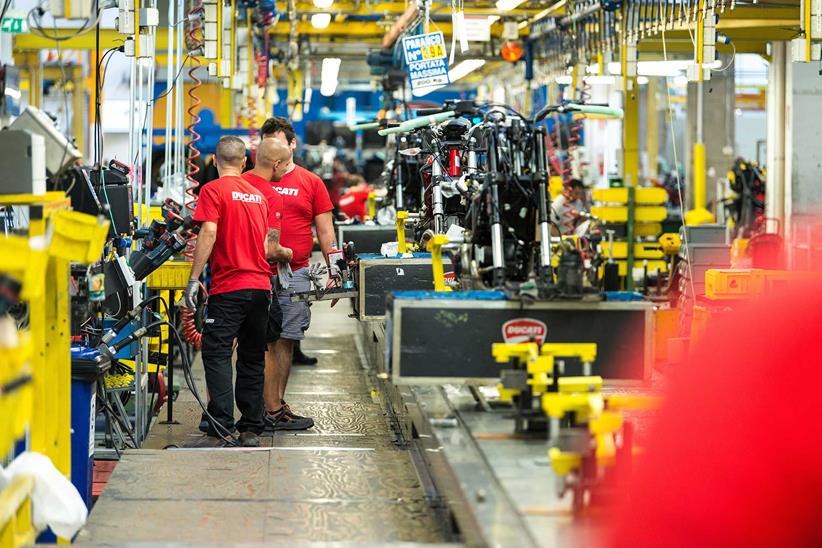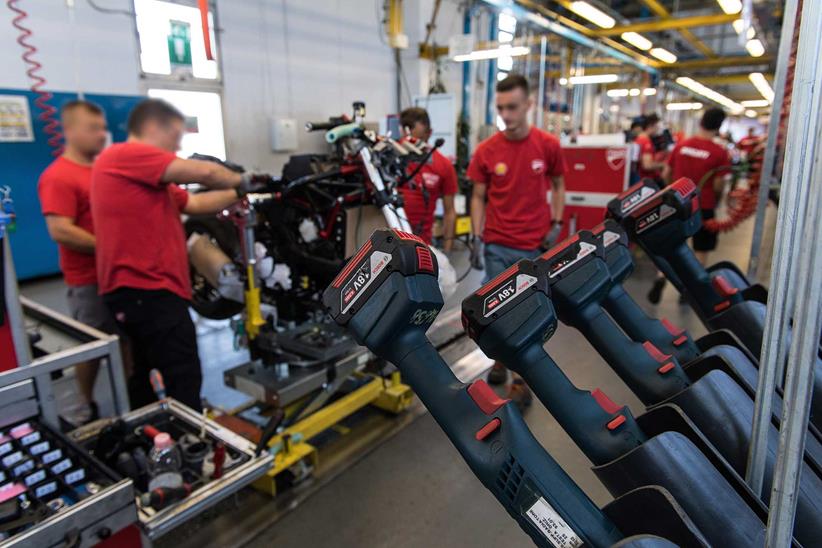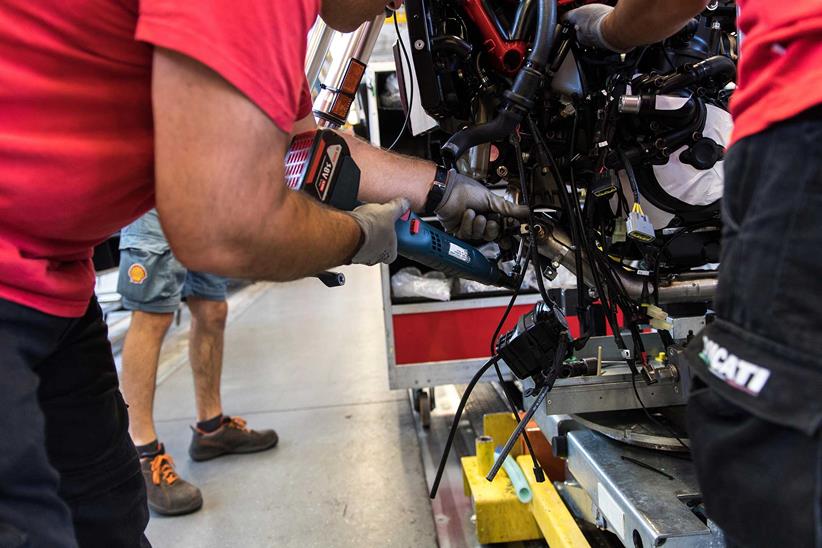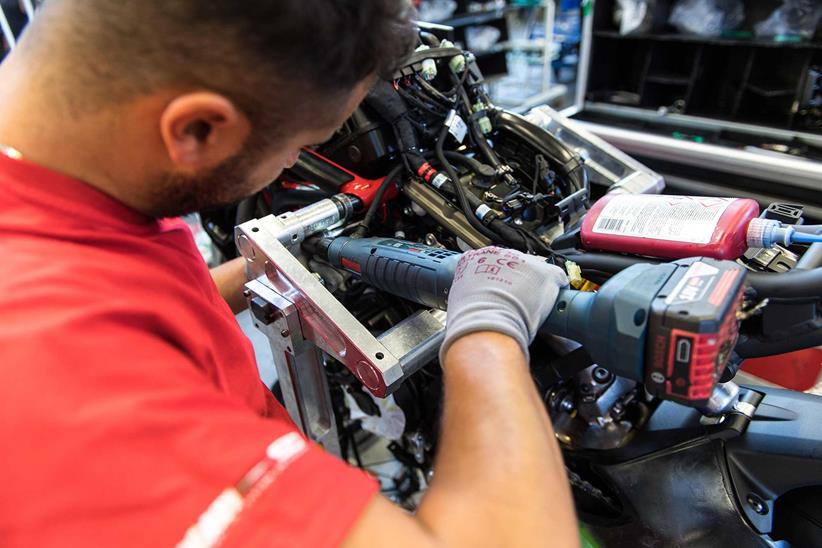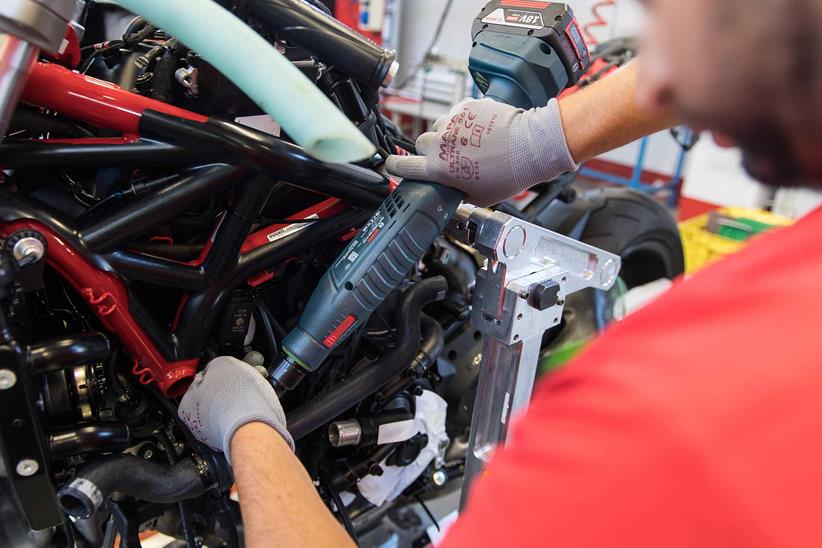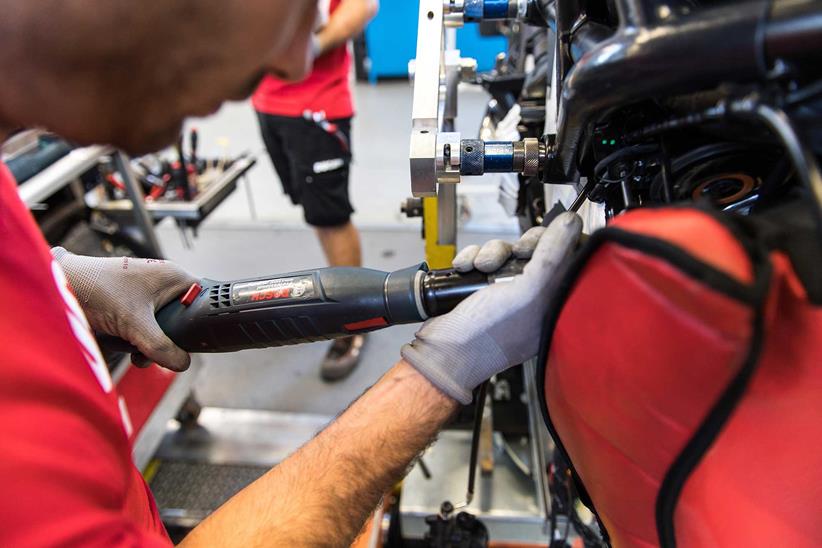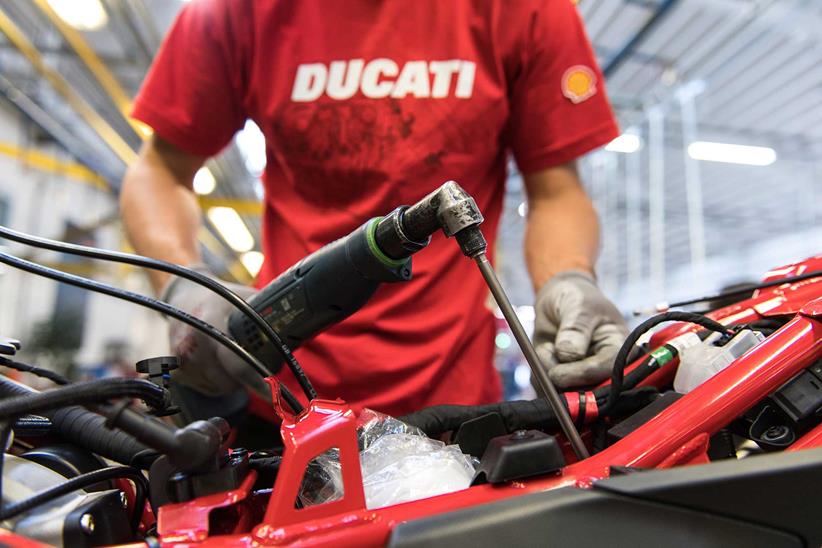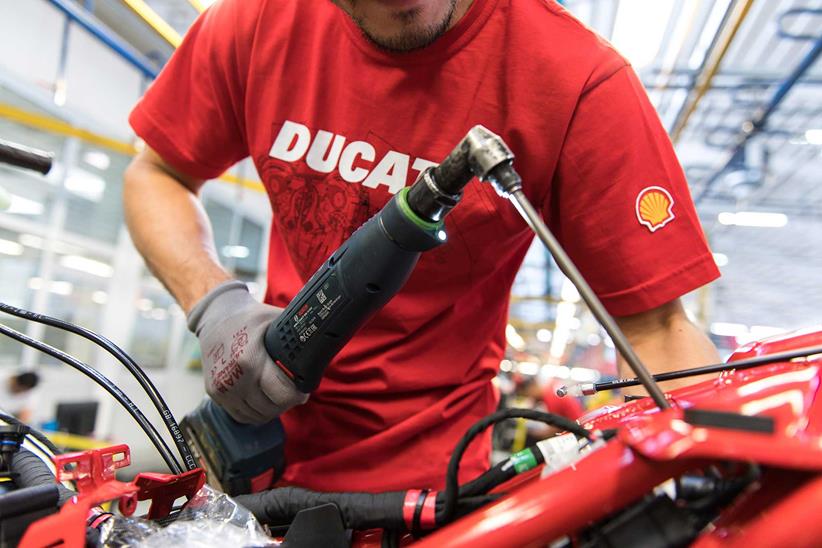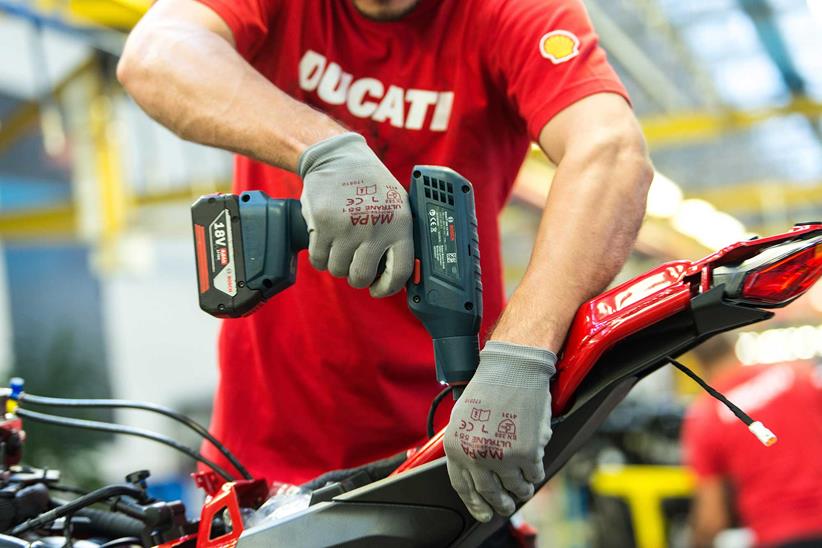Inside Ducati: MCN walk around the Bologna factory
Ever since March 1946 motorcycles have been built by Ducati at their current factory in Bologna, although the company has expanded considerably both in terms of models made and volume produced since those day. Nowadays the facility sees around 55,000 bikes roll off its production lines with 500 workers employed solely to ensure that during the high season, 350 bikes are built every single day. And that’s just one area of the facility located on Via Antonio Cavalieri Ducati (the three Cavalieri brothers founded the firm in 1926, their father was Antonio) in the Borgo Panigale district of Bologna.
As well as Ducati’s worldwide central offices, which employ another 480 members of staff, this is also home to Ducati Corse, the firm’s race department, with 120 members of staff ensuring that the likes of Chaz Davies and Andrea Dovizioso remain competitive on the firm’s blood red bikes. Sadly the doors to Ducati Corse were closed to MCN, but we did follow the production line to see what goes into turning raw component parts into a finished Ducati motorcycle…
TOP STORIES
- Foggia and Marini join Bulega and Bagnaia at Team Sky VR46
- Emmerdale’s Kelvin Fletcher officially gets on two wheels!
- 5 best motorcycle thermals and base layers
- Bike of the day: Aprilia SL1000 Falco
- Gallery: Celebrating 20 years of the R1
The future stars
Rather fantastically, the first area you come to in the Ducati factory is the DESI (Dual Education System Italy), or training center. Every year 26 lucky 16-18 year olds from the local area win two-year scholarships to either Ducati or Lamborghini. Not only do they learn how to use items such as CNC machines, they also get paid 600 Euros a month while they gain useful knowledge for a career in the Italian automotive industry. Working for Ducati is seen as a great honour in the local area and the firm invests heavily in bringing new talent into the company through the DESI.
Raw materials
Right next to the DESI zone is the machining area where raw items such as cranks and camshafts are finished by milling machines and it is the only area of the factory that runs 24/7 and 7 days a week. The parts arrive from local companies (60% of Ducati’s parts are sourced in Italy, 10% from Europe and the rest from outside the EU) and in a raw state before being finished. A Panigale camshaft, for example, arrives weighing 1.12kg and is turned, drilled, milled and ground before being declared a production-ready part that now weighs just 0.41kg. Once all the parts are machined they join the rest of the production-ready motorcycle components in the Ducati ‘supermarket.’
This wonderfully named section is exactly that, a supermarket of parts that workers go to and collect together all the bits required for each individual area of the production line. The parts are placed in special containers, ensuring that when they are attached to a bike the assembly worker knows that all the bits are there and if a nut is left in the container something has gone wrong! It didn’t used to be like this, in the bad old days in the 1990s when the factory was slightly more chaotic parts were selected by the assembly line workers, increasing production time and leading to many more mistakes and therefore poor reliability of the firm’s models.
Engine pre-assembly
Prior to the production lines, workers pre-assemble the motors into two sub assemblies. One contains the crank and pistons while the other is the engine cases with all their bearings etc inserted. It just saves time and at this point the engine’s unique identification numbers are engraved on.
Engine production lines
Ducati has three engine production zones – the Superquadro lines, the Hypermotard/Monster/SuperSport and Scrambler lines and the Diavel and Multistrada lines. Each zone is split into two production lines and two workers work on each motor at one time. Interestingly they don’t change engines, once they start work on the motor they continue with the same motor until they have finished so as not to make the job repetitive. All of the workers can build any part of any of the engines. The first part of the engine assembly takes 60 minutes for a Superquadro as it is a more complicated motor when compared to the Scrambler or Multistrada engines, which take 30-minutes for the initial build. Once this stage has been reached, a second pair of workers complete the motor, a process that takes a further 60-minutes for the Superquadro, 45-miuntes for the Scrambler and 60-minutes for the Multistrada.
Each motor can contain up to 500 parts and contradictory to poplar myth, the engine workers are not all female, although many women do work on this side of the production line… Every engine is tested to 2500rpm once it has been built and any that fail are taken to the ‘hospital’ – a zone where ‘doctors’ strip and rebuild the engines to ensure they are correct. In the 1990s around 5-6% of engines used to fail initial tests, nowadays it is less than 1% due to the modernisation of the motorcycle production facilities.
Motorcycle assembly lines
Ducati make 34 different models of motorcycle and the Monsters, SuperSports and X-Diavels are built on one line, the Scrambler on another and the Panigales on a third assembly line. The engine and pre-painted frame are mated together to create a skeleton of a bike before, on a production line that automatically moves a station every 22 minutes, the final bike is created. The complexity of most models means that two workers work on each bike at a time, however the Scrambler only requires a single worker. Every day in the high season, which is February to May, 350 Ducatis are finished on these lines before being rolled to the testing facility.
End of the line
Once the bike is assembled (well, nearly, delicate items such as the mirrors and fairing are not attached) every bike is first emissions tested before being ran on a dyno. Ducati make over 200 model variations as many countries have specific emissions laws, so it is at this point the correct ECU map is inserted. Once complete the whole bike is run on a dynamic dyno to check items such as the ABS, traction control, quickshifter, gearbox and of course the motor all work perfectly. The dyno test takes up to five minutes and the bikes aren’t bounced off their rev limiter, they are only taken to 5000rpm and speeds of just over 60mph. Once passed, they are good to go. It takes roughly 10-14 hours, not including machining the parts, to build a complete Ducati motorcycle from start to finish.
Shipping
Ducati simply don’t have the storage facilities to house all the bikes they build, so every day the 350 produced are taken to a storage facility before being shipped to one of the 783 Ducati dealers located in 90 countries all over the world. And then on to a very happy customer – or Ducatisti.
Ducati in numbers
1200 – numbers of employees in the Bologna facility
500 – the number of workers on the production line
30% – the percentage of women employed by Ducati
120 – the number of people in the race department
350 – the number of bikes produced a day in the high season
55,000 – bikes built by Ducati in 2016
120 minutes – time to build a Superquadro motor
500 – parts in a Ducati engine
783 – number of Ducati dealers worldwide
Have a browse for your next bike on MCN Bikes For Sale website or use the MCN’s Bikes For Sale App.
